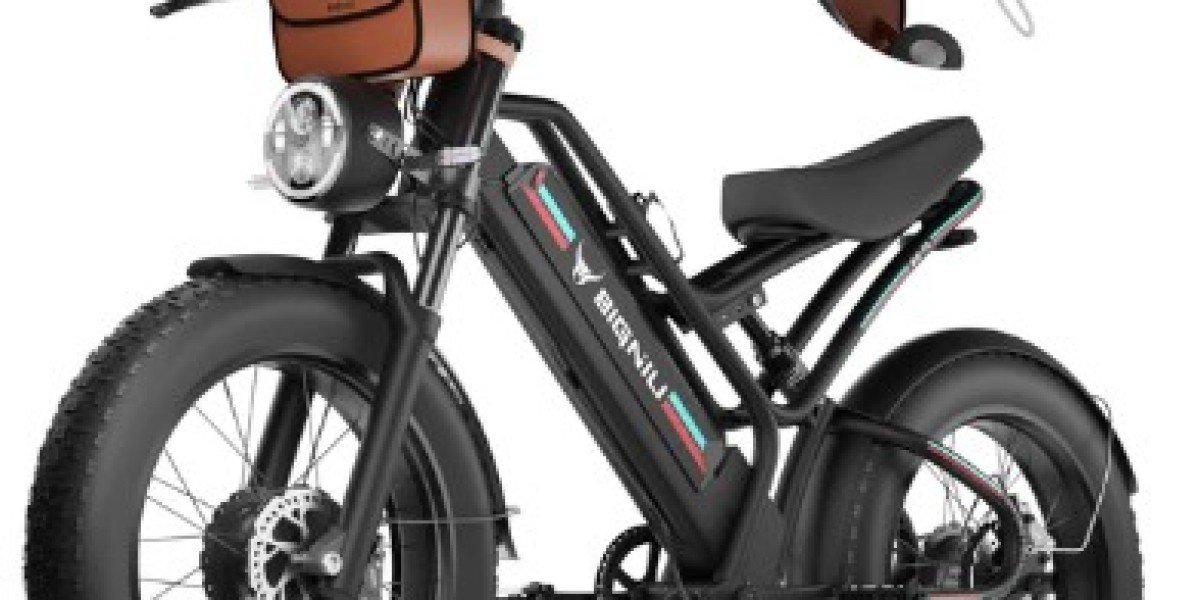Bicycles have come a long way over the decades—from sleek road bikes built for speed to rugged mountain bikes built for trails. But in recent years, one type of bike has surged in popularity, winning over adventurers, commuters, and casual riders alike: the fat tired bike.
These chunky, off-road beasts might look unusual at first glance, but once you hop on and ride one, it's easy to understand their appeal. Fat tired bikes offer unmatched versatility, grip, and comfort, opening up a whole new world of biking possibilities—especially in terrains where standard bikes struggle.
In this post, we’ll explore why fat tired bikes are having their moment, who they're perfect for, and what you should know before buying one.
What Is a Fat Tired Bike?
At its core, a fat tired bike is exactly what it sounds like—a bicycle equipped with extra-wide tires. These tires generally range from 3.8 to 5 inches in width, nearly twice as wide as a traditional mountain bike tire. With that increased surface area, these bikes deliver improved traction, shock absorption, and stability across all kinds of terrain.
Originally designed to tackle snow-covered trails and sandy dunes, fat bikes have quickly grown in popularity across all climates for both off-road and urban use.
Why Fat Tired Bikes Are Booming in Popularity
Fat bikes used to be considered niche—perfect for snowy winters or specialized trails. But today, they’ve become more mainstream than ever. Here’s why:
1. All-Season, All-Terrain Capability
Fat tired bikes are the ultimate go-anywhere bicycles. Their massive tires allow you to ride over snow, sand, mud, gravel, and rocky trails without sinking, slipping, or stalling. Rainy commute? Slushy trail? No problem.
2. Incredible Comfort
Thanks to the wide tires and low air pressure, fat bikes provide a cushioned ride. They act like built-in suspension systems, soaking up bumps and uneven surfaces, which reduces fatigue and keeps your joints happy.
3. Beginner-Friendly Stability
New riders love the way fat bikes handle. The large tires provide more ground contact and balance, making them easier to ride for beginners, kids, and older adults alike. They’re great confidence-builders.
4. They Just Look Cool
Let’s face it—fat bikes have a tough, eye-catching look. Their oversized tires give them a powerful stance that turns heads, whether you're on the trail or just cruising around the city.
Where Can You Ride a Fat Tired Bike?
One of the biggest draws of a fat tired bike is that it can handle places other bikes simply can’t. Some popular spots include:
Snowy trails and winter paths
Sandy beaches or dunes
Rocky mountain trails
Wet, muddy forest paths
Urban environments with potholes or uneven pavement
Gravel and loose dirt roads
Basically, if your regular bike would struggle to maintain grip or comfort, a fat bike thrives.
Fat Tired Bike vs. Other Types of Bikes
If you’re trying to decide whether a fat tired bike is right for you, here’s a quick comparison against other popular styles:
| Bike Type | Best Use | Tire Width | Comfort | Speed |
|---|---|---|---|---|
| Road Bike | Pavement, racing | 23–28mm | Low | High |
| Mountain Bike | Off-road trails | 2.1–2.5" | Medium | Medium |
| Hybrid Bike | Urban + light trail | 1.5–2.0" | Medium | Medium |
| Fat Bike | All-terrain, snow, sand | 3.8–5.0" | High | Low–Medium |
Fat bikes aren’t built for high-speed racing, but they more than make up for it in control, comfort, and versatility.
What About Fat Tire E-Bikes?
A huge trend in 2024 and 2025 is the electric fat bike—a fat tired bike equipped with an electric motor. This combo takes all the benefits of a traditional fat bike and adds effortless pedaling, making it easier to tackle hills or go long distances without fatigue.
Electric fat bikes are ideal for:
Commuters who want a stable ride in all weather
Off-road adventurers who need a boost
Older riders or those with physical limitations
They're a game-changer for accessibility and convenience.
Things to Consider Before Buying
If you’re thinking about buying a fat tired bike, here are a few things to keep in mind:
?️ Frame Material
Fat bikes come in aluminum, steel, and carbon fiber. Aluminum is lightweight and affordable, steel is strong but heavy, and carbon is ultra-light (and ultra-pricey).
? Rigid or Suspension?
Many fat bikes are rigid, relying on the tires to absorb shock. But if you plan on hitting rougher trails, a front suspension fork can provide extra comfort and control.
⚙️ Gearing
Look for a wide gear range if you’ll be riding uphill or on long-distance trails. Many fat bikes come with 1x or 2x drivetrains for simplicity and durability.
?♀️ Fit and Weight
Fat bikes are heavier than standard bikes. Make sure the size fits your height and you’re comfortable lifting or maneuvering it if needed.
Pros and Cons of Fat Tired Bikes
✅ Pros:
Unmatched traction and stability
All-terrain, all-season usability
Extremely comfortable ride
Beginner-friendly
Stylish and rugged appearance
❌ Cons:
Heavier than other bikes
Slower on paved roads
More expensive than basic bikes
May not fit on standard bike racks
But if you're not racing or trying to break speed records, these trade-offs are usually more than worth it.
Who Should Ride a Fat Tired Bike?
Fat bikes are an excellent choice for:
Outdoor enthusiasts who want to ride year-round
People living in snowy or sandy areas
Urban riders looking for comfort and confidence
Anyone who enjoys exploring off the beaten path
New cyclists seeking better balance and support
Whether you’re looking for fun, fitness, or functionality, a fat tired bike delivers in a big way.
Final Thoughts: Are Fat Tired Bikes Worth It?
If you want a bike that’s versatile, fun, and ready for any terrain, a fat tired bike is more than worth it. It’s not just about the tires—it’s about the freedom to ride anywhere, anytime, without worrying about conditions or comfort.
The cycling world is shifting, and fat bikes are leading the way into new possibilities—whether you're tearing through a snowy trail or just rolling down the block in style.
So go ahead, embrace the big tires. Your next adventure is waiting.






